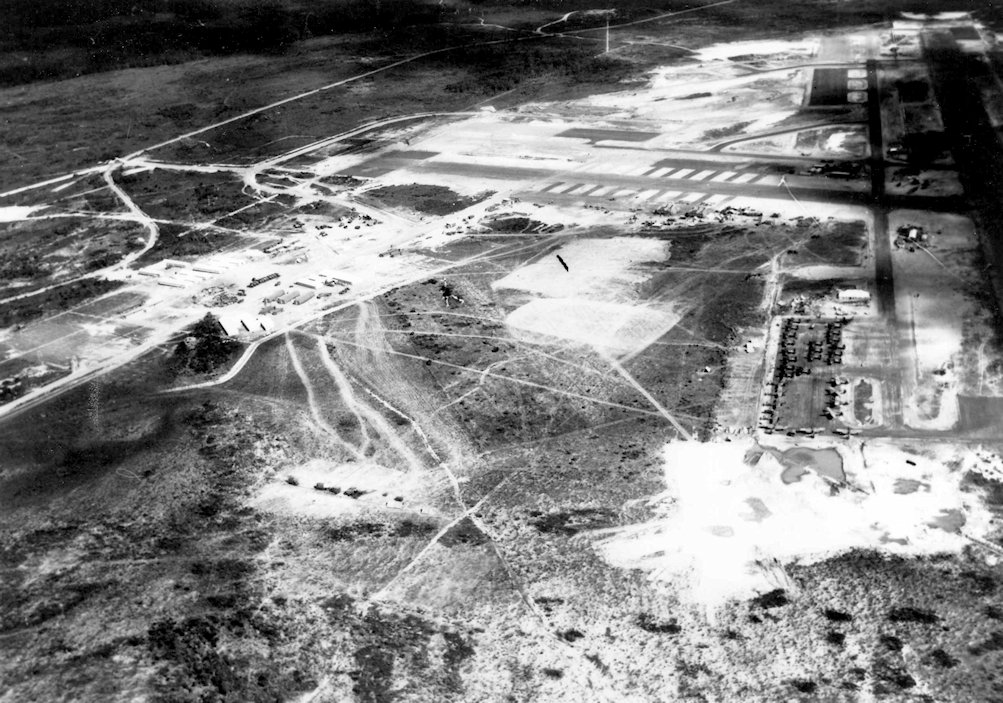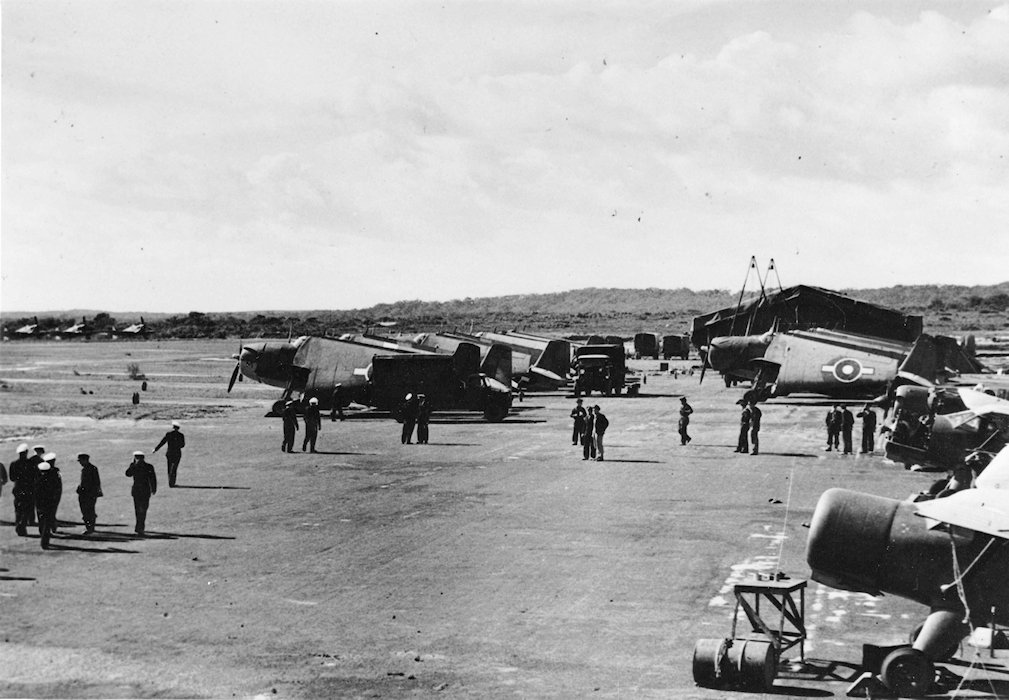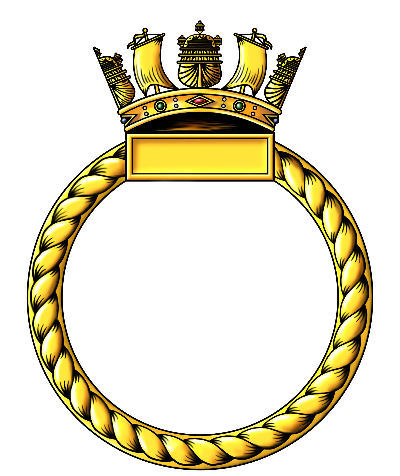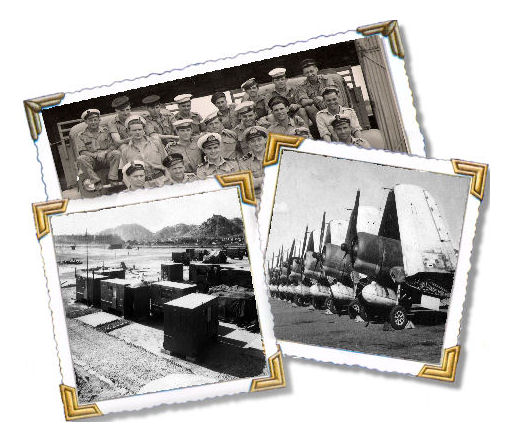Mobile Naval Air Base No. V
Assembly and commissioning in the UK
Personnel and equipment for Mobile Naval Air Base V began to assemble on December r 6th 1944 at Royal Naval Air Station Ludham in Norfolk, the headquarters of the Mobile Naval Airfields Organisation (MNAO). The unit began to assemble as a type B (Large) MONAB tasked with supporting up to 100 aircraft, however due to a late policy change it was decided to change its role; the planned Mobile Repair components were withdrawn on January 11th 1945 and the standard Mobile Maintenance and Maintenance Servicing units (part of a type A MONAB) were substituted. In addition, two Maintenance, Storage & Reserve components were attached, the result was a hybrid MONAB, neither a type A nor B but somewhere in between.
MONAB V was allocated the following maintenance components to provide support facilities for the following aircraft types:
Original allocation: -
Mobile Repair Unit No. 1 supporting Corsair Mk. II & IV, Firefly Mk. I, Hellcat Mk. I & II, Seafire Mk. III & L.III
Mobile Repair Unit No. 2 supporting Avenger Mk. I & II, Expeditor Mk. II, Martinet TT. I, Sea Otter Mk. I
These units continued to assemble and were despatched overseas, they were
to be attached to MONABs where needed
Substituted components: -
Mobile Maintenance unit (MM) No. 4 supporting Avenger Mk. I & II, Corsair Mk. II & IV, Martinet TT. I
Maintenance Servicing unit (MS) No. 7 supporting Avenger Mk. I & II
Maintenance Servicing unit (MS) No. 8 supporting Corsair Mk. II & IV
Maintenance Storage & Reserve unit (MSR) No. 1* Avenger Mk. I & II, Corsair Mk. II & IV, Hellcat Mk. I & II
Maintenance Storage & Reserve unit (MSR) No. 2* Seafire Mk. III & L.III, Firefly Mk. I
Mobile Air Torpedo Maintenance Unit (MATMU) No. 6
* Detached to operate under MONAB 1 on arrival in Australia Additional
components added later in Australia
At the beginning of December 1944, the MONAB formation base was a very crowded place; there were three MONABs already on the station; MONABs II, III and IV. The personnel of MONABs II & III were not due to depart until the 20th and the programme called for MONAB v and Transportable Aircraft Maintenance Yard No. 1 (TAMY 1) to be simultaneously assembled commencing on December 6th. Even after MONABs II & III departed it would still be very crowded; some of the overcrowding was eased by splitting TAMY 1 in a similar fashion to that done for MONAB II; the HQ component was to form at Ludham and the technical components at RANE Riley at Warrington in Lancashire.
The late change to the unit’s component makeup led to considerable re-drafting and many ratings joined only a few days prior to sailing from the UK; drafting leave had to be given top priority, the necessarily large store parties came second and the familiarisation of ratings with their equipment and instruction in tropical hygiene etc came a poor third. MONAB V was no different from its predecessors when it came to shortfalls and inadequacies in equipment and training. In particular the preparation of the vehicles for shipment was impeded by the inadequate servicing facilities and the delivery of many vehicles too late to be properly serviced before embarkation. In some cases, vehicles joined the convoy on route to the port of embarkation. The main consequence of this was that no time was available for checking the spare parts carried by each vehicle. The M/T section suffered considerably because the ratings allowed by complement were not yet available. In addition, the complement of drivers for a typical MONAB was made out for an allowance of 88 prime movers, whereas MONAB V had 122 prime movers allocated to fulfil the new role.
As with the previous four MONABs the full complement of radio vans did not arrive until shortly before moving off and therefore wore not checked or tested before sailing. MONAB Staff found there was insufficient time allowed to familiarise the unit's very junior Telegraphist staff with the equipment supplied, most of them had never seen the ground radio equipment before. Also, insufficient numbers of specially trained and experienced air radio mechanics were drafted, this necessitated many being sent on special short courses, this meant them not being available for checking over their equipment.
Storing difficulties prior to the movement of the unit from the United Kingdom were considerable; it was the practice that as far as possible all stores were sent by depots to Ludham. This vast mass of stores, of which a large proportion were in cases and crates weighing over 4 cwts (203 Kilos), had to be manhandled several times between arrival at the nearest railhead at the village of Potter Heigham and dispatch again by rail to the port of embarkation. Some of the stores despatched from the depots were delivered by road and needed to be uncrated for overseas shipment. Many items together with a considerable quantity of G-1098equipment had to be re-cased or crated after acceptance. Reports on the experiences of earlier MONABs and their formation difficulties were not available for reference by the units currently forming, commanding officers’ reports on proceeding would not be filled by MONABs I – III until they were installed and so had not yet filtered back to the MNAO staff. Consequently, answers to the questions as to how much cash, loan clothing and compo rations etc., should be taken appeared to be left to the guesswork of the supply officer.
Despite the problems and obstacles encountered during formation, MONAB V commissioned as an independent command on February 1st 1945 bearing the ships name HMS 'NABSWICK', Captain H.G. Dickinson D.S.C. RN in command. TAMY 1 also commissioned on this date as HMS NABSFORD.
Despatch overseas
Both MONAB V and the advance elements of TAMY I were to be despatched together, their personnel and equipment departed for Gladstone docks, Liverpool, overnight by road and rail on February 16th for embarkation. Up to this time, MONAB V had not been allocated an operations site; negotiations with the Australian authorities to secure further airfields on loan were being hampered by labour disputes and delayed completion dates. It was decided to house MONAB V at RAAF Jervis Bay, NSW as soon as it was ready. Upon its arrival in Australia, it was to lodge at Nowra with MONAB I, a few miles to the north of Jervis Bay until it was ready for occupation. TAMY I was to occupy RAAF Archerfield in Brisbane, Queensland.
The personnel embarked in the Troopship STIRLING CASTLE (Transport J.4) for passage to Australia, sailing on February 18th in convoy KMF.40 bound for Gibraltar; MONAB V stores and equipment were to travel in the S.S. DURHAM, which sailed with Convoy UC.58A on the 26th.
After leaving the Gibraltar convoy the STIRLING CASTLE proceeded directly to the Panama Canal, arriving at Balboa on the Pacific end of the Canal on March 8th. Here Captain Dickinson departed for Australia by air to assume command of MONAB I at RNAS Nowra, Commander T.K. Masterman temporarily taking command of MONAB V. After crossing the Pacific unescorted she called at Wellington, New Zealand on March 22nd, then Brisbane on March 26th, finally arriving in Sydney Harbour on March 29th. On disembarking the personnel travelled by train to HMS NABBINGTON, RNAS Nowra.
The DURHAM arrived at Sydney on April 2nd, the stores and equipment were off loaded ready for transport to RNAS Nowra. On inspection It was found that a number of cases had sustained damage due more to the rough handling given them by stevedores than to faulty construction. Also, a number of cases were lost in the general confusion of stores at the docks and some of the N.A.A.F.I. stores had been broken into presumably because the letters "NAAFI" wore painted on the cases. Overall, however, the damage and loss were relatively slight when over 5,000 cases were brought from the United Kingdom.
Once their equipment and vehicles were unloaded both the MSR units were detached to operate under MONAB I. Once collected together at Nowra the personnel of MONAB V began transporting equipment and erecting the various MONAB components at Jervis Bay. At that time the airfield was operating as a tender to RNAS Nowra, and the station was in use for operational flying by MONAB I from March 7th to permit emergency repairs to be carried out on the runways & taxiways at Nowra which were deteriorating due to wet weather and heavy use. During this period the personnel were accommodated at Nowra, there being hardly any permanent buildings or facilities on the airfield at Jervis Bay. Captain H.G. Dickinson had relieved Commander Nunnerley as commanding officer of MONAB I, assuming command on March 9th 1945.
Commissioned at RNAS Jervis Bay, New South Wales
Flying operations returned to RNAS Nowra on April 28th 1945 and the station was left to MONAB V, three days later the airfield was commissioned as RNAS Jervis Bay, HMS NABSWICK on May 1st 1945, Captain Dickinson resuming his command; Captain J.D Harvey assumed command of MONAB I. Of the seven MONABs to be installed in Australia No. V occupied the most basic location; all of the unit’s mobile equipment was needed as only the runways, taxi tracks and hardstandings were complete, but no hangars nor airfield equipment were present; 4 Dorland portable Hangars were erected for aircraft servicing. An accommodation site located to the NE of the airfield could house 50 officers and 470 other ranks, the bulk of the unit’s approximate complement of 600 men. The overflow and up to 100 officers and 810 other ranks from disembarked squadron were billeted in tents.

RNAS Jervis Bay looking South. The MONAB equipment is installed in the Northeast corner of the airfield around the parking area off the 27 half of runway 09/27 (running E/W in this picture) and a parking area off the 33 end of runway3 3/15 (running roughly S/N in this picture). There is a sports ground in the centre of the picture, and the camp area further to the left.
No. 723 Fleet Requirements Unit (FRI) also arrived here from RNAS Bankstown on the 1st; intended as a resident unit at RNAS Nowra it had formed up at Bankstown and had been making training flights to both Nowra and Jervis Bay during March and April before moving to RNAS Jervis Bay with its 6 Martinet target tugs and 6 Corsairs to begin operations. The first disembarked squadrons arrived on May 7th when elements of 30 Wing disembarked from HMS IMPLACABLE, this included 1771 (Firefly), 828 (Avenger), 801 & 880 (Seafire) squadrons. There were five flying accidents during their stay; the first occurred on the 8th when the starboard undercarriage leg of Firefly MB401, flown by the squadron commanding officer, Lt. Cdr W.R.J. MacWhirter RMVR, collapsed on landing. The other four all involved Seafires, NN458 (880 Sqn) flown by Lt M. Goodfellow RNVR landed with the undercarriage retracted on the 14th, NF597 (880 Sqn) flown by Sub-Lt J.E. Letham swung off the runway, and the prop struck the ground on the 19th, NF583 (801 Sqn) flown by t E. L. Jervis RNVR suffered engine failure on take-off and made a wheels-up forced landing on the 21st, , and finally, also on the 21st, during a period of Aerodrome Dummy Deck Landing practice PP986 (880 Sqn) flown by Sub-Lt F.H. Tucker RNVR stalled over the runway and burst the port tyre causing the aircraft to nose over. First to leave were 1771 & 828 re-joining IMPLACABLE on the 24th, 801 & 880 joining them the following day.
By the end of May the shortcomings of the Dorland hangars became known; they were found to be unsatisfactory due to the insecurity of the attaching straps holding the canvas to the metal framework. In high winds, many of these securing straps broke away from the canvas and was at risk of the whole of the covering becoming detached. Their short-comings aside, the air engineering department would have preferred the number of hangers increased to 8 instead of the standard 4 which were in their scale of issue.
The station was not to remain quiet for long, 848 (Avenger) Squadron and 1841 & 1842 (Corsair) Squadrons disembarked from HMS FORMIDABLE on June 1st. No. 723 FlRU, moved to RNAS Nowra on the 4th leaving the airfield to FORMIDABLE's air wing until they too re-embarked on June 22nd. There was one accident during their stay, on the 18th; while taxyng back along the runway in Corsair KD727 ('130/X',) Sub-Lt. N Hodgson RNVR of 1842 Sqn, hit KD760.
The next unit to arrive was 1843 (Corsair) squadron which flew in from RNAS Maryborough on July 12th, the squadron was intended for the new No.3 Carrier Air Group (CAG), which was to form at Nowra, but was located at RNAS Jervis Bay until room was available at RNAS Nowra, the squadron moving there on the 20th. Two days later, 812 (Barracuda) & 1846 (Corsair) squadrons disembarked from HMS COLOSSUS, along with 827 squadron (Barracuda) & 1850 (Corsair) squadrons from HMS VENGEANCE; both of these were Light Fleet Carriers which had just arrived in Sydney to join the BPF. These squadrons were to stay until August 13th when they re-joined their carriers.
Victory over Japan and the rundown to closure
On August 15th the Japanese surrendered and VJ Day was celebrated at Nowra by members of both MONABs I & V. This was to mark the beginning of a quiet period at Jervis Bay, a situation which was to continue until September 11th when the 16th CAG comprising of 837 (Barracuda) & 1831 (Corsair) squadrons disembarked from the Light Fleet Carrier HMS GLORY. Flying training continued for 1831 at Jervis Bay with two accidents occurring during the remainder of September; on the 17th Sub-Lt. R. Phillips RNVR in KD565 had both main wheels lock up on landing, the aircraft overturned but he was OK. Sub-Lt. W.R. Hodkinson suffered an engine fire at 500 feet in KD219 and ditched in Jervis Bay on the 21st, he was safely recovered. During October 837 were to re-equip, exchanging their Barracudas for 12 Fireflies. The 16th CAG moved to RNAS Nowra on October 29th; the last flying units had now left the station.

Senior BPF staff visit the main maintenance area at RNAS Jervis Bay, May 1945. There are three Stinson Reliant communications aircraft under maintenance nearest the camera and five Avengers parked on the apron. Three Seafires belonging to a disembarked squadron can be seen parked on the apron on the far side of the runway. .
Re-organisation: As part of a review of the naval air support in the Pacific theatre the Admiralty announced in October that four Mobile Units were to be disbanded in early November 1945, these were to be MONAB I, III, IV and VII; MONAB II, V & VI plus TAMY I would continue operations in support of fleet operations and the reception and disposal of aircraft arising from the disbandment of squadrons as the BPF began to reduce its size. As part of this downsizing operation MONAB V was to replace MONAB I at Nowra and MONAB VI would replace MONAB III at Schofields. MONAB VII personnel were to be redistributed to other units, many joining TAMY I.
Commissioned at RNAS Nowra, New South Wales
MONAB V commissioned RNAS Nowra as HMS NABSWICK on November 15th 1945. HMS NABBINGTON paid off on the same day. RNAS Jervis Bay reverted to the status of a tender to Nowra. At this time 820 & 828 (Avenger), 837 (Firefly and 1831(Corsair) Squadrons and 706 Pool & Refresher Flying Training Squadron were present at Nowra; 820 Squadron re-embarked in INDEFATIGABLE on November 23rd. The scaling-down of operations continued apace; 1831 squadron had its strength reduced from 21 to 12 Corsair IVs on November 26th. There was one flying accident during December 1944, on the 3rd Sub-Lt L. Sharples RNVR was killed when his aircraft, Corsair KD864 of 706 crashed into the bush 6 miles SE of Nowra and was engulfed in flames. He had been returning to Nowra in formation with two Seafires from a low level cross-country flight and was missed after a scheduled turn.
The 15th CAG was the next to arrive, 814 (Barracuda) and 1851 (Corsair) squadrons, disembarked from the Light Fleet Carrier VENERABLE on New Year’s Eve. These squadrons were to receive the same reorganisation as those in GLORY’s Air Group; 1851 was reduced in size from 21 to 12 Corsairs while 814 exchanged their Barracudas for 12 Firefly FR.1s. Flying training had continued at RNAS Nowra for both the 15th and 16th CAGs and there were three more flying incidents during this period; on January 7th Sub-Lt J, Aston RNVR in Corsair KD736 of 1831, Stalled landing and his wingtip hit the Deck Landing Control Officer (presumably doing Aerodrome Dummy Deck Landings?) , Firefly DK487 of 814 Squadron, flown by Sub-Lt A. Kerry RNVR stalled on approach, and struck rough ground on the 12th, Sub-Lt R.N. Toseland RNVR in Corsair KD915 1 of 1831, dropped his starboard wing after landing in crosswind on the 17th.
GLORY’s Air Group began re-embarking on January 14th 1946 with the departure of 837 squadron, followed by the new, leaner 1851 squadron on the 19th. During this month No. 723 FRU relocated to RNAS Schofields, MONAB VI, on the 21st, they were followed by 814 on the 22nd and 1851 on the 24th. By the end of January 1946, 828 squadron was the last remaining occupant of RNAS Nowra.
Paying Off
RNAS Nowrahad now begun its run-down to closure, the stock of reserve aircraft held on the station were flown to RNAS Bankstown over the next month. In late February the men of HMS NABSWICK sentimentally marched through the streets of Nowra to say farewell to the town. MONAB V, HMS NABSWICK, paid off at Nowra on March 18th 1946, the station being returned to RAAF control. No. 828 squadron remained at Nowra as a lodger unit with the RAAF until embarking in IMPLACABLE on May 5th 1946 for passage to the UK, leaving their aircraft behind.
Last updated 02 September 2022
HMS 'NABSWICK'

Function
Support for disembarked front line squadrons.
Aviation support Components
Mobile Maintenance (MM) 4
Maintenance Servicing (MS) 7 & 8
Mobile Air Torpedo Maintenance Unit (MATMU) 6
Aircraft type supported
Avenger Mk. I & II
Barracuda Mk. II
Corsair Mk. II & IV
Firefly Mk. I
Martinet TT. I
Commanding Officers
Captain H. G. Dickinson D.S.C. 01 February to 09 March 1945
Commander T. K. Masterman 09 March to 01 May 1945 (Temp command)
Captain H. G. Dickinson D.S.C. 01 May to 18 November 1945
Captain J.F.H. Sawyer 18 November 1945 to 18 March 1946
Related items
R.N.A.S. Nowra History of the airfield and other information - part of the Fleet Air Arm Bases web site
Reminiscences
Memories of those who served with MONAB V
~Leading
Air Fitter (Ordinance) Kenneth Lowe.
Leading Aircraft Mechanic
(Airframe's Leslie Meakin
Aircraft Artificer 4th Class (O) Maurice Ayling
Petty Officer Radio Mechanic Charles Davidson

Comments (1)
does anyone have any information about able seaman E.D.Card Jx 544698?